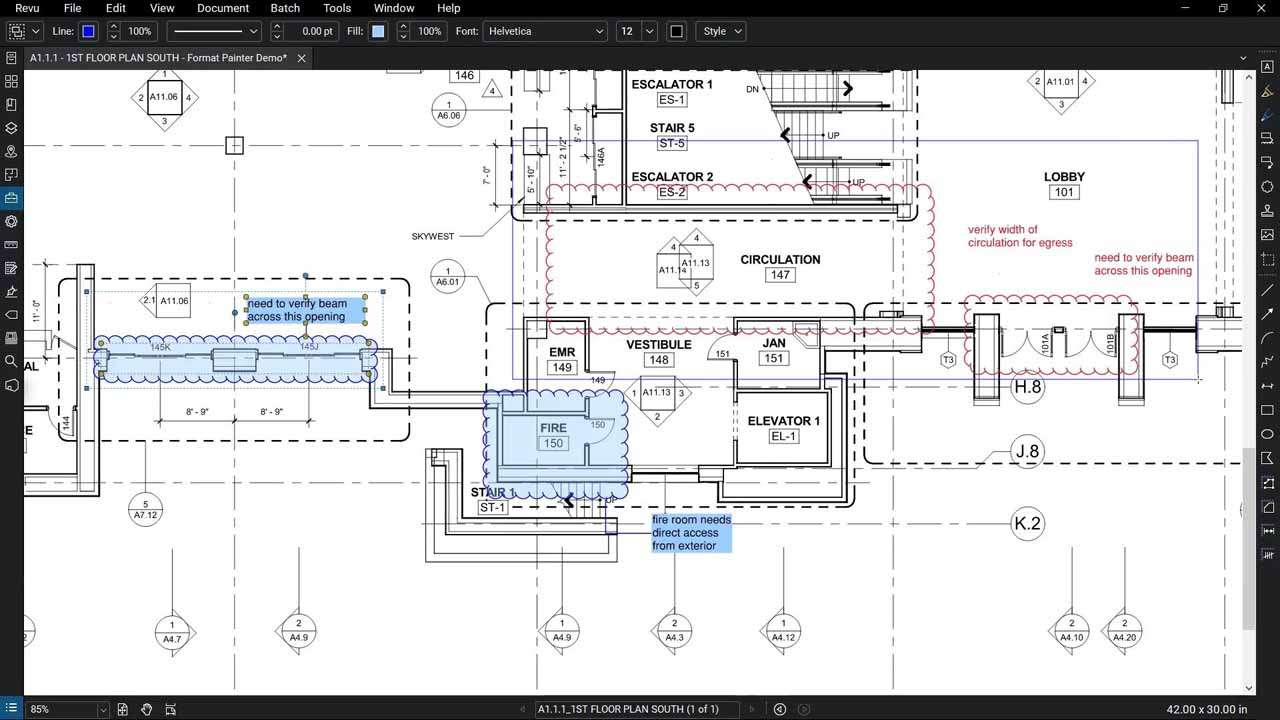
How Markup, Digital Collab Tech Changed This Engineer’s Job Forever
Marc Robillard credits constantly evolving construction technology tools for allowing him and his engineering colleagues to effectively help clients carry out their visionary ideas
Marc Robillard’s first building was made of plastic.
Although he doesn’t list this project on his professional resume, Robillard partially credits his childhood playing with Lego bricks as an experience that—perhaps subconsciously—ultimately led him down his eventual career path as an engineer.
When Robillard enrolled at Virginia Tech in 2004, he had no idea what he wanted to major in—despite the fact that he was at a school that specialized in engineering. Still, it took Robillard about a year to eventually settle on mechanical engineering, and he said his childhood Lego projects may be part of the reason.
“When I was growing up, I played with plenty of Legos,” Robillard said. “And so the construction part was always exciting. I think that experience as a kid helped push me along to make a decision about majoring in engineering without the front half of my brain fully realizing it.”
The decision led Robillard into a career that has him using his full brain all of the time. As a design project manager at G.M. Hill Engineering, a design-build, architecture and engineering firm headquartered in Jacksonville, Florida, Robillard sits at the intersection of design and construction teams and a given project’s client. Among other things, he helps broker information and requests between these stakeholders with an engineer’s expertise so visionary construction projects can become reality.
“Ideally we have projects we’re trying to design and construct at the same time,” said Robillard, who is based in Virginia Beach, Virginia. “So now you’re taking information from your design team and sending it to construction; then sometimes also helping broker that information between construction and the client.”
Military upbringing

Robillard’s father served in the United States Navy, settling Robillard and his family in Virginia Beach, a hub for naval activity. His exposure to the military branch as a kid would serve Robillard well, as after graduating from Virginia Tech he would go on to work as a mechanical engineer for Naval Facilities Engineering Command (NAVFAC).
Robillard worked two mechanical engineering stints for NAVFAC—the first from 2011-2013 and the second from 2020-2021—before moving to the private sector in his current role. Robillard also worked as a mechanical engineer for architecture, engineering and construction firm Pond & Company for several years before a short stint in a similar role for consulting firm Jacobs.
The first eight years of his career taught Robillard about his emerging proclivity to work directly with customers as an engineer—a skill that serves him well in his current role.
“In those seven or eight years, just something about interacting with the customers was appealing,” he said. “I had a little bit of a talent for it, and it was always really exciting to be able to talk to a client who’s not an expert at the thing that you are and get the information they don’t even know they have.”
Finding Bluebeam
What makes Robillard’s job easier are the constantly emerging tools in the design-build space where engineers can help make a client’s vision reality, and Robillard credits Bluebeam as one of the technologies that has completely changed his career.
Since first discovering Bluebeam as a simple PDF viewer and editor in 2014, Robillard has continued to expand his use, from using Revu to chart out ideas for initial schematic designs to Studio Projects and Sessions for document storage and collaboration, respectively. “Finding a new feature in Bluebeam has never stopped in those seven years since I first discovered it,” Robillard said, “and that has been one of the things that’s so gratifying about using Bluebeam.”
Using Bluebeam for quick schematic sketches has been especially valuable for Robillard, as it helps his team map out initial scopes for projects when deadlines are tight—a frequent occurrence when working for government clients whose budgets are closely scrutinized.
“So we might get a request for proposal, and it’s due 10 days later or something,” Robillard said as an example. “If we can create a really quick schematic design, it makes the construction group’s job easier and it gives us documentation about what we’ve priced for a project.”

“But a lot of those jobs we won’t get existing drawings,” Robillard continued, “so being able to create a sketch just within a few seconds and use some of the snapshot features in Bluebeam so you can grab an old version, or part of another drawing, and put it on your sketch and start using the markup tools right away is just—it’s been really cool being able to produce that without having to use any of your CAD tools.”
Being able to streamline such tasks comes at a premium these days for Robillard. Compounding his busy professional life as an engineer is a new job he recently took on: being a dad. With an infant keeping his after-hours life busier than ever, time is an increasingly precious commodity, making tools like Bluebeam even more valuable not just to his professional life but his personal life as well.
“Bluebeam has made my job easier in ways that I didn’t even know that it could,” Robillard said.
Share this post on:
Subscribe now
to receive newsletter with latest news weekly from Revu Experts Vietnam.
Related posts

Musselman & Hall Boosts Efficiency with Bluebeam
Musselman & Hall has embraced Bluebeam software to streamline their project takeoff and management processes.

The Top 3 Most Effective Construction Project Management Software
Let’s explore the top 3 most effective project management software currently shaping the complex landscape of the construction industry.

How Can GPS Help Construction?
From keeping onsite equipment secure and productive to helping map out land and terrain for projects, Global Positioning System (GPS) technology offers the construction industry a dimension of information that was simply unthinkable a few decades ago.

How Drone Technology Is Construction’s Eye in the Sky
The advent of drones gives the construction industry the opportunity to get a unique view of a building project as it rises from the ground.

